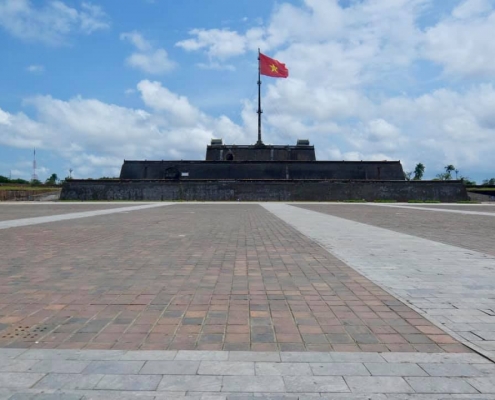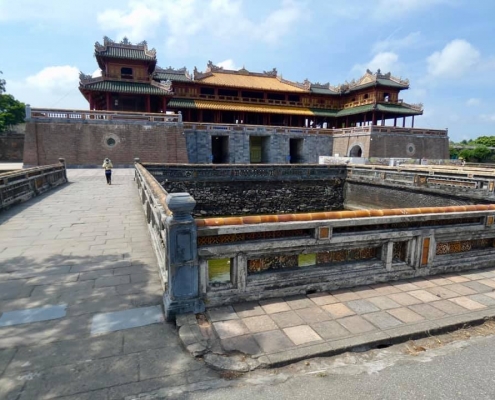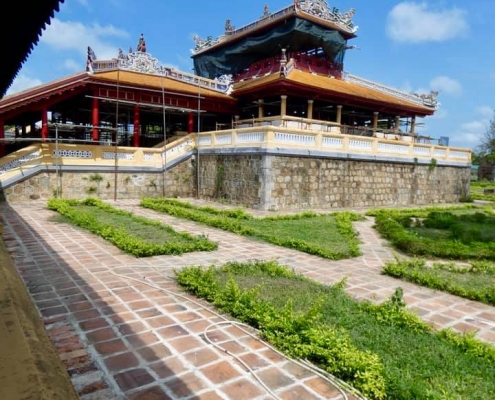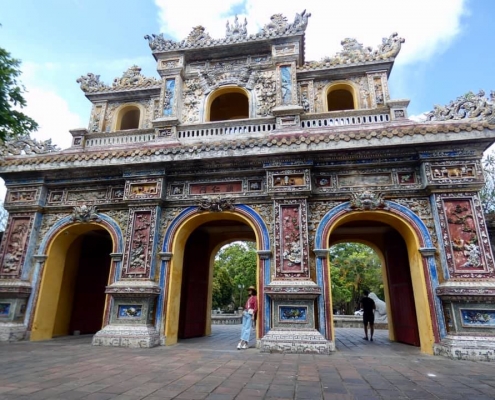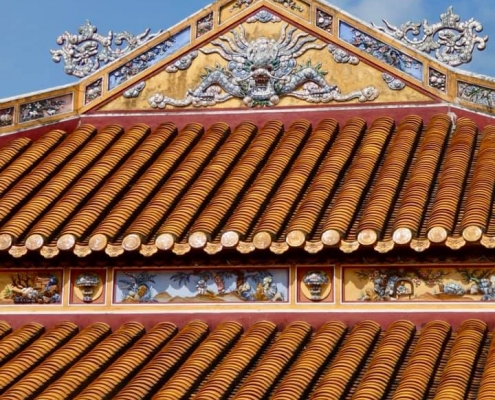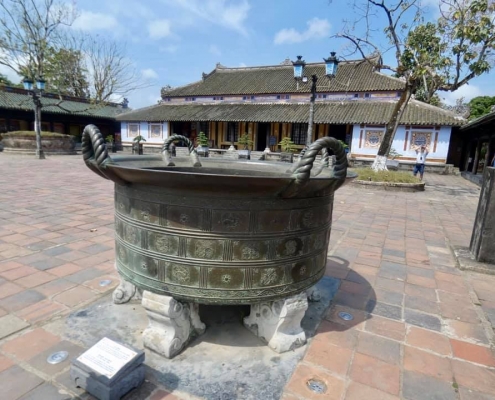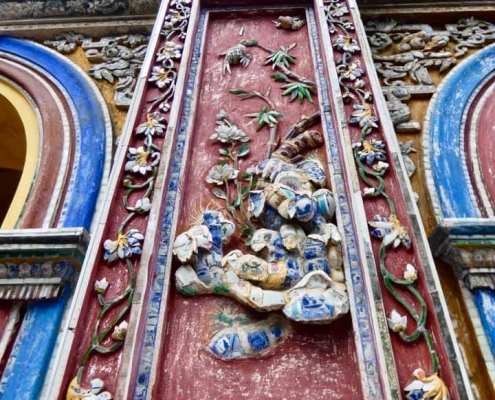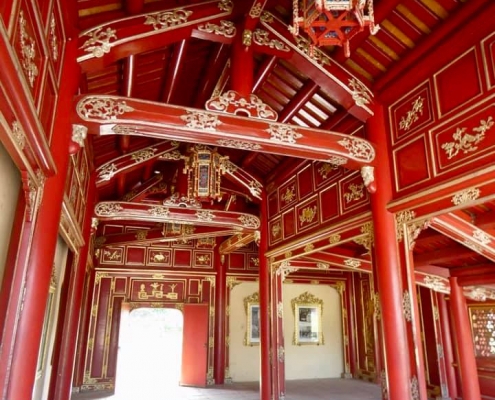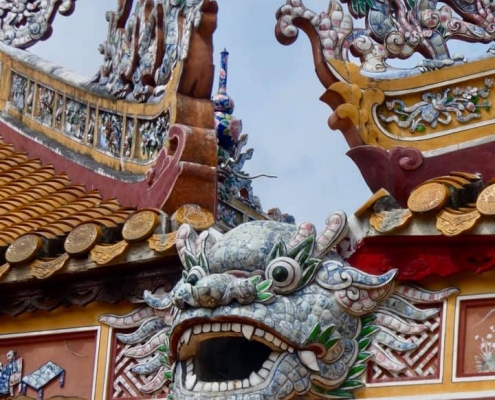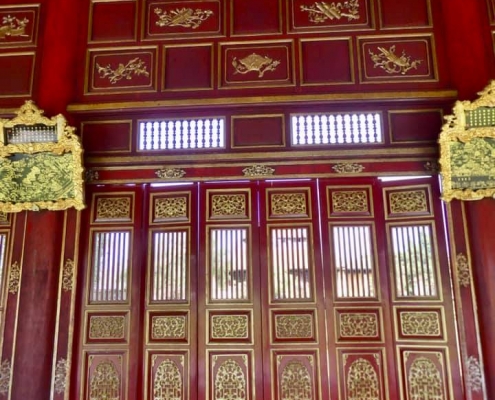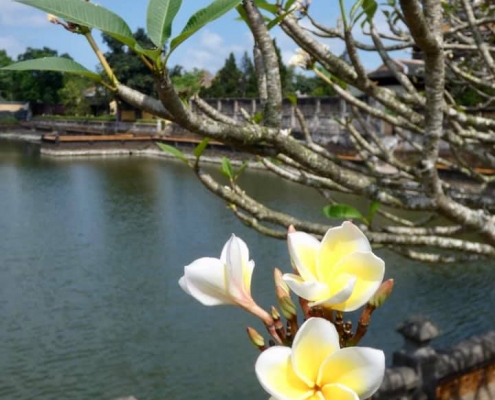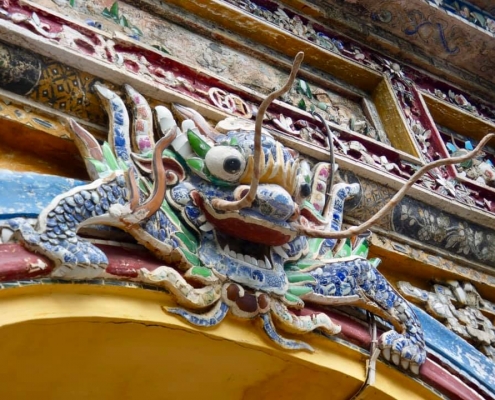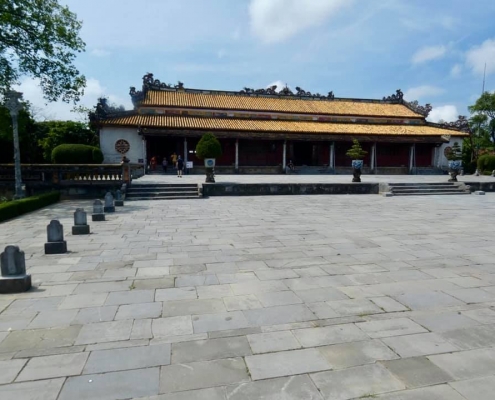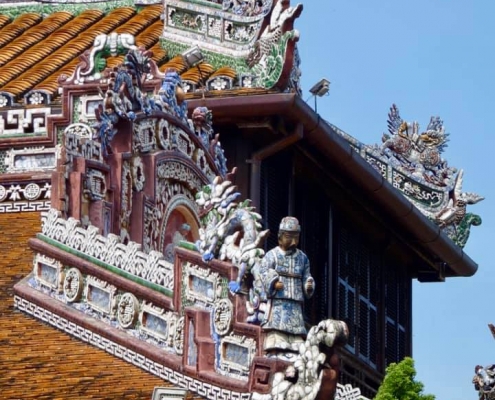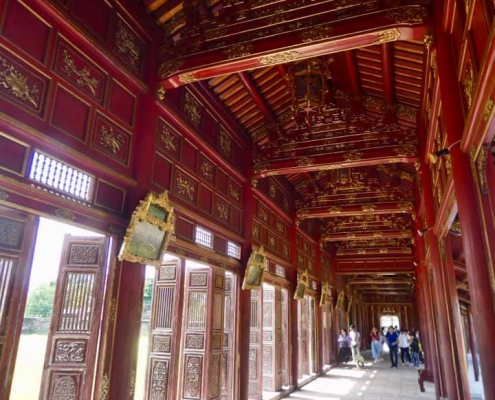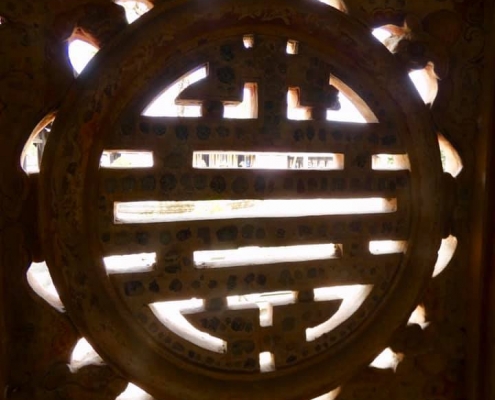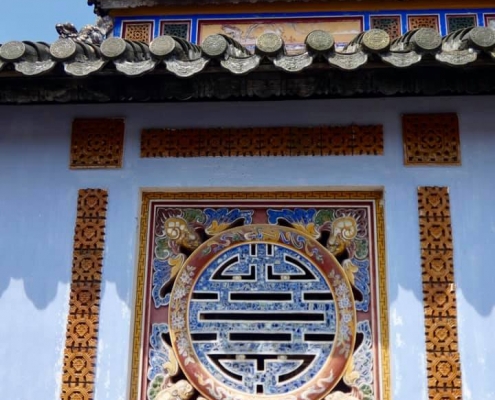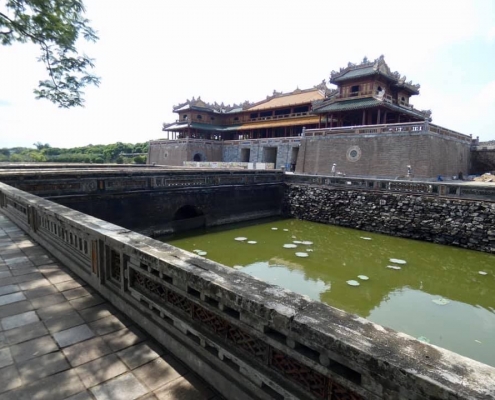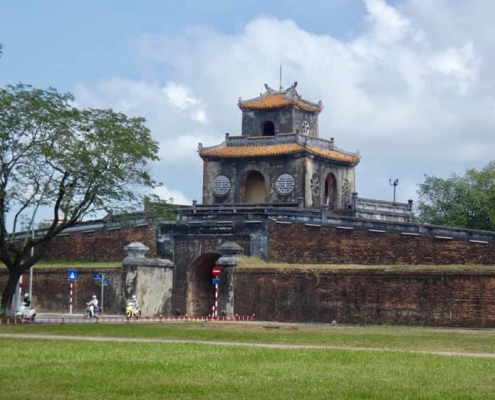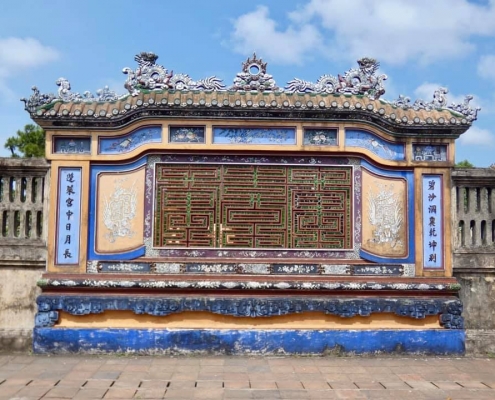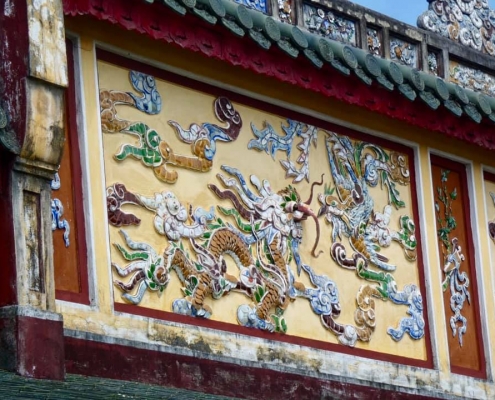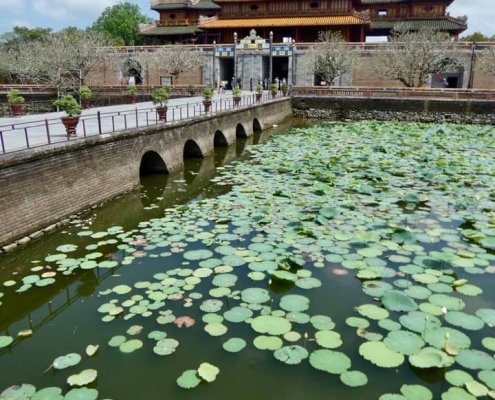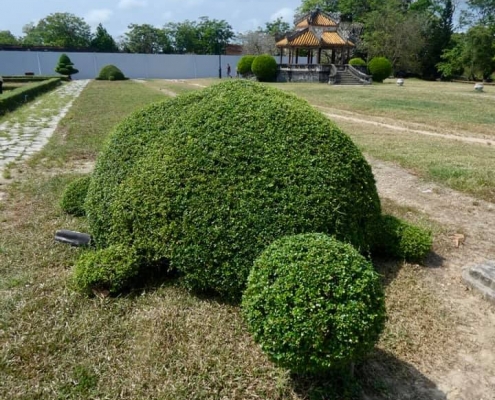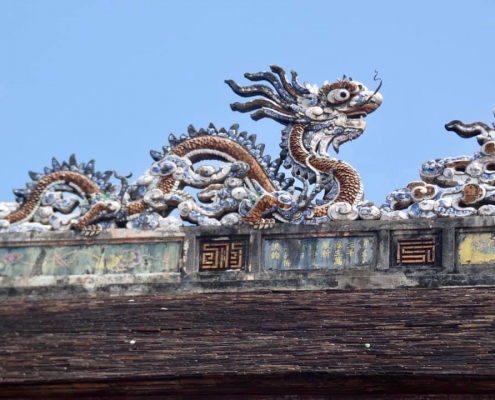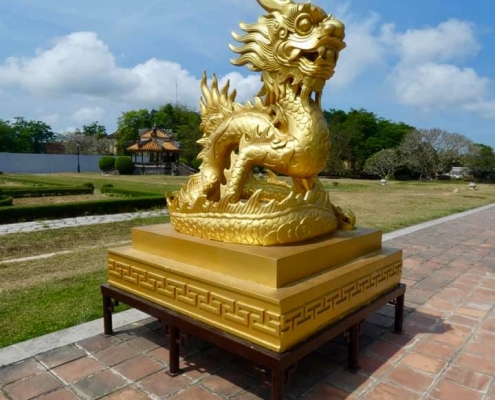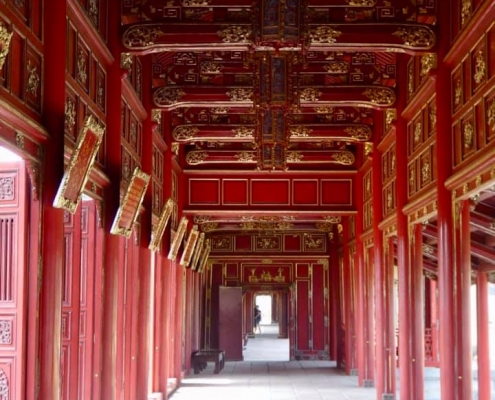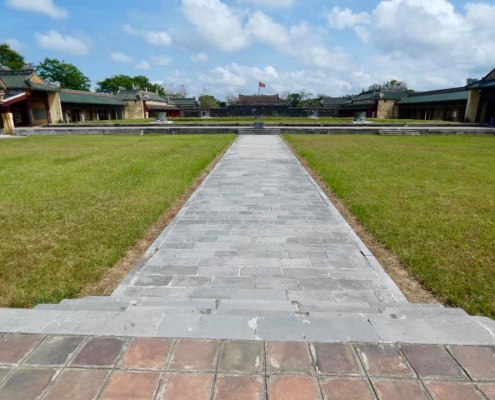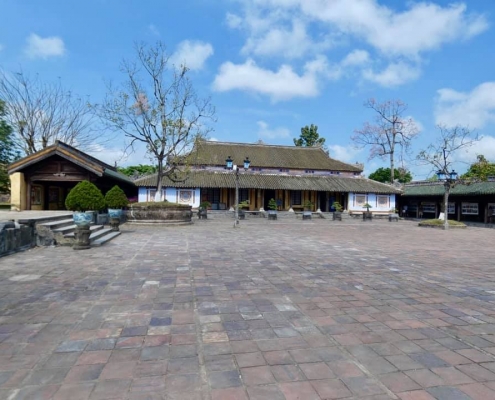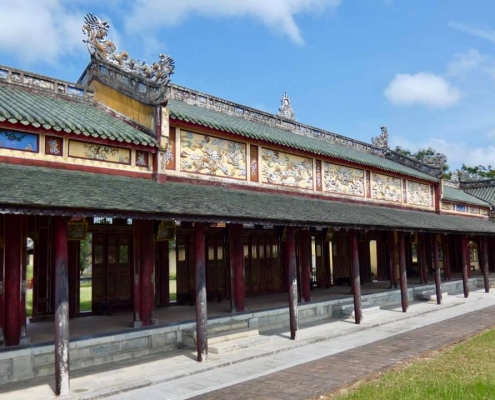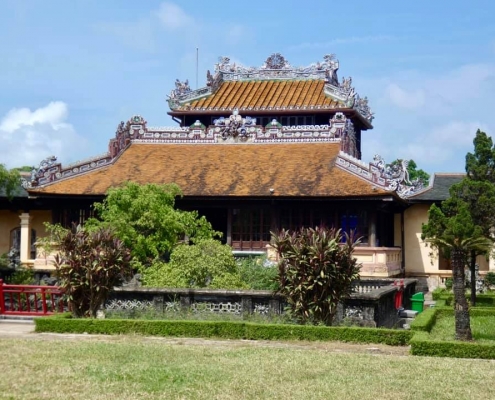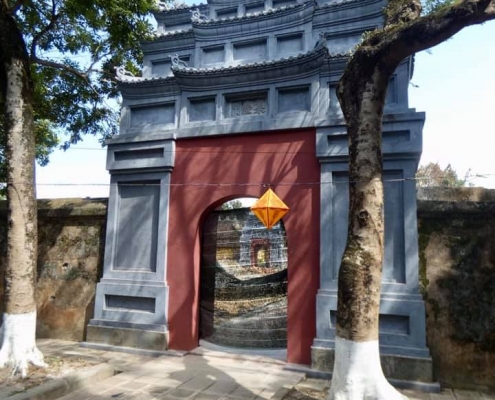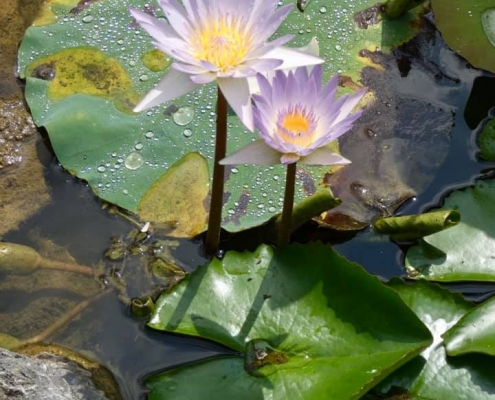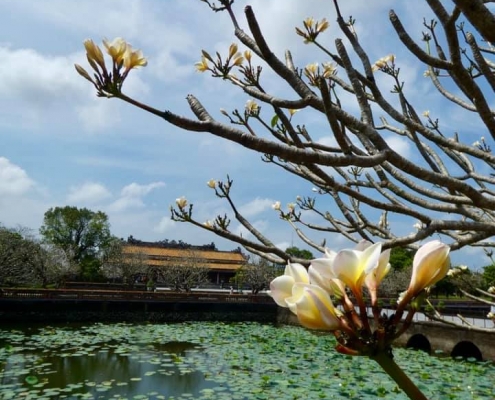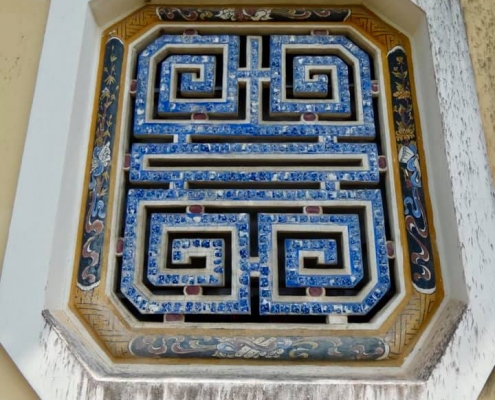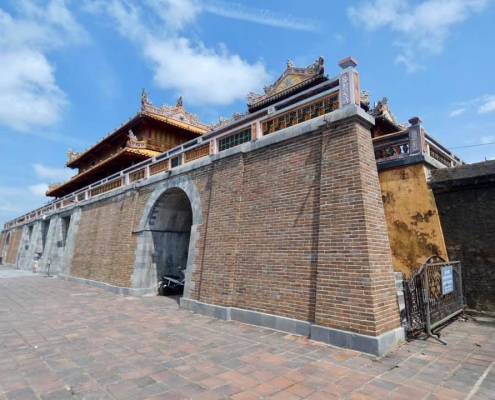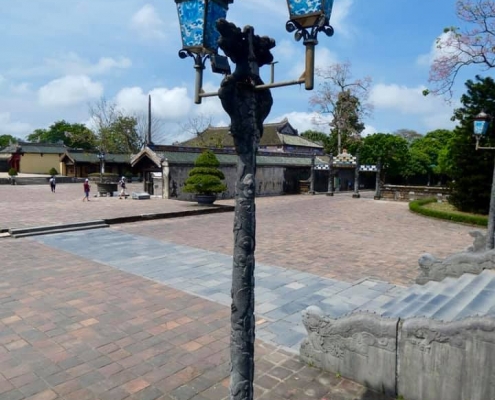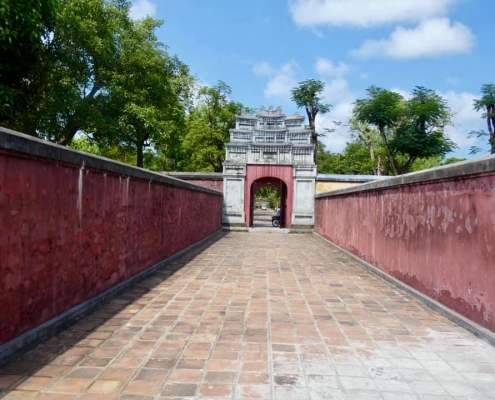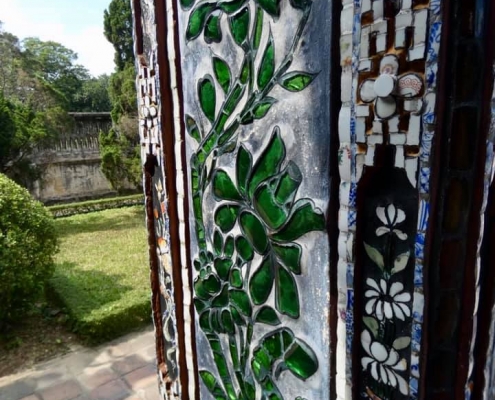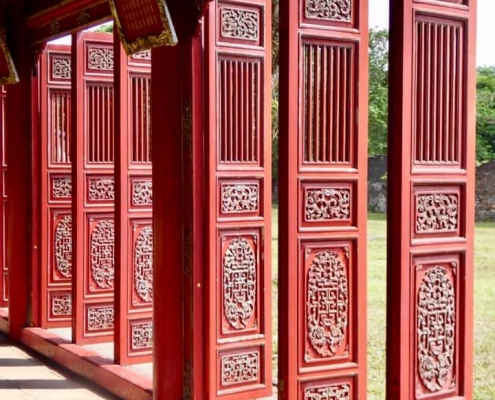Vietnam: Hue – Imperial City
Hue was the old capital of the Vietnam empire in the 18-20th century under the Nguyen dynasty. In 1789, the emperor Nguyen Anh unified Vietnam and a decade later began an unprecedented construction of the massive citadel and imperial palace in Hue. The square walled citadel measures 10km in perimeter, with massive high and thick walls, a moat, and 10 gates. Modeled in many ways on Beijing, the Imperial Palace and Purple Forbidden City lie in the heart of the citadel, surrounded concentrically with other structures, temples, courtyards, gardens, smaller palaces, pavilions, and fortifications. Unfortunately, the old glory (which probably was totally mind-blowing at its height) was seriously destroyed and near annihilated. First, Viet Minh forces captured Hue from the French in 1954 during the first Indochina war and the French came back and laid a siege for 6 weeks, with the battles raging door to door. Then in 1968, Communist Viet Cong advanced on Hue during the Tet offensive and the Americans subjected the city and the citadel to enormous aerial bombardment. Out of 180 buildings within the Citadel and Forbidden City only 8 remained, partially collapsed. Over the years, with the UNESCO help, slow restoration brought back some of the buildings and the site is truly impressive even in what’s left. The ornate Purple Forbidden City, Thái Hoa Imperial Hall, and the Hien Nhon Gate are particularly grand.

